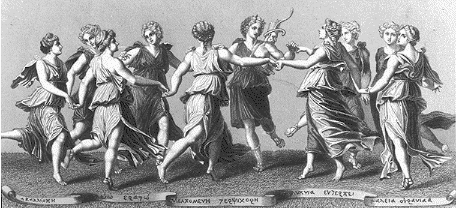By
Wilhelmina S. Orozco
Since
the nienties, I have been going to the Open Air Auditorium in Luneta
and most of the time, I come out thrilled by the presentations there.
Tonight, July 25, I watched the performance after 3 decades of
existence of the Majestic Band of Muntinglupa City. Composed of more
than 40 instrumentalists, with a tenor to boot, the Band boasts of
the Bacarra children of Emmanuel Bacarra, founder of the Band way
back in 1993, as conductors, Michael and Mae very able musicians. Mae follows the footsteps of Tita King who also conducted there before.


I
want to focus on the interaction of the performers with the audience.
The sequence of the program is that a host talks about it as a whole,
and then introduces the Band. After that, a series of musical
presentation ensues. I think that is all right if your audience are
into music, either as students or faculty of music, or musicians
themselves.
But
the audience at Luneta are mostly promenaders, young and elderly
alike, lovers, students hanging out with friends, who are hardly the
type who could care less if the performance is excellent or not, so
long as they can be entertained. Of course there are also
student-friends of the instrumentalists who could be knowledgeable
about music.
Anyway,
the Band is very good, based on my understanding of music, as it
played pop and standard pieces except for that by Tschaikowsky. I
particularly liked the theme of Mission Impossible which Michael Rex
O. Bacarra conducted. The playing gave me goosepimples as it started
with that familiar intro of Tom Cruise's films. What makes the
performed piece highly praiseworthy is that all the sections of the
Band could be heard clearly. You could distinguish which section –
whether reed, or brass, or percussion, are playing. There was no
instance at all of a cacophony of sounds that is usually the
characteristic when an ordinary orchestra performs. Michael was able
to capture the passionate rendering of the melody, turning it into a
suspenseful and intriguing display of interplay of notes, timing and
dynamics.
I
could only surmise that because now, as the host had introduced him,
he is based in the Middle East and performs at posh hotels and
probably in front of royalties, he has been challenged to hone his
skills while experiencing that fast-paced life in the urbanized
country. He was able to project the atmosphere of the western world
which the musical piece evokes. And probably also, he has been a
witness to how that other part of the world exists and so he is able
to make the Band evoke that very well.
Someone
said that is also because the score is good. But there are conductors
who have mangled a beautiful score of Tschaikowsky also.
Then
when Michael conducted the Mambo beats, a series of pieces with such
a tempo, the audience felt like dancing with the lilting music. I
felt like doing the same and so just moved a little bit in my seat.
How
about the attempt to make the audience absorb the meaning of the
music? I think the host, or the conductor also must relate the
contents of the piece he or she will play with the audience. How is
this? For example, that piece containing all the Rey Valera
compositions could be introduced as particular familiar pieces that
we hear with singers. We never expected that they, all sewn into one,
could turn out to sound like a classical piece being played by a huge
orchestra.
Well,
as I listened and watched I also noticed that the clarinet, after all
could also sound like the violin. And I have been told by a
percussionist whose name I forgot to ask, that usually that is what
musicians who transpose an orchestral piece for the band-- the
clarinets are made to play the violin parts.
This
is the kind of knowledge that I want the audience to get also, not
just the sounds of the melodies on stage. Rather, our people's
knowledge of music could go up a notch higher instead of just being
an accidental experience of a piece.
Maybe
the National Parks Development Committee could include in their
budget for next year, a provision of a music scriptwriter who would
be able to bring out those nuggets of musical wisdom that would
deepen our people's understanding and appreciation of not only Band
music, but all other types of group performances. When that is done,
I am sure our people would turn creative and thus be able to transcend their economic
problems. Most of the time, poverty pushes people to retreat to escapist media
musical materials which focus on unchallenging themes.
That
was the staged performance that I had the chance to see. But earlier
this week, I again watched a Jazz Band performance of Blood Spirit
Drums headed by Royal Hartigan. The group performed at the Philippine
Women's University under the auspices of the US Embassy. Not only did
they perform, but they also taught the audience how to dance and sing
the way the Africans of Ghana sang their traditional songs. And so,
there was swaying of hips, shuffling the feet and chanting, which
later on turned into an “imitate my pose” type.
In
its first performance, at the beginning of the program, the Jazz Band
had a Kalinga gangsa musical piece performed by music students
and faculty then gradually the different instruments of set of drums,
bass, saxophone and then electronic keyboard mixed into the aural
space. I did not like that so much as the ending piece of the group,
wherein, the kulintang was the intro and the same gradual entry of
the different musical instruments happened. Then towards the end,
they also receded into silence until you could only hear the
kulintang and the cymbals and drums.
There
was more recognition of each other's instruments in that latter part
which made the performance almost seem meditative as the melody was
repetitive.
I
understand the group will perform at the Cultural Center of the
Philippines as part of the Jazz Festival opening this coming week.
What
does music play in our national life? It is a different language –
tones, rhythm, etcetera. Why delve into them? As one of the Jazz Band
group said, it is a creative expression in aural space. Actually,
even in tribal settings, music is the centerpiece of attention when
community people gather together either to celebrate or rue the
demise of a tribal mate, or even just to discuss a political issue as the
killing of a member of theirs by another tribe, as what I had
witnessed in Bugnay, Kalinga when I went there in 1979 and produced
“Vochong” a Super 8mm film documentary under the sponsorship of
the Ecumenical Center for Development then under Rev. Cesar Taguba.
That film went the rounds of the communities in the country as well as
in the key cities of Amsterdam, London, and Oberhausen, Germany where
I attended film festivals. It came with a slide presentation of the stand of the Kalinga people against the Chico River Hydroelectric Project of the Marcos Government aimed at building dams to generate electricity for the provinces up north -- the Ilocos region and Cagayan. Ilocos is Marcos "country" while Cagayan is of Enrile -- secretary of defense at the time. Luckily, it was scuttled because of the protests which reached high levels, nationally and internationally.
You
see Folks, I think we are quite delayed in putting emphasis on arts
and culture in our country. We have had no president, after the
People Power phenomenon, who really appreciated them and poured
resources so that we could come up with many pieces that we could
distribute in the country and abroad for the viewing of our Kababayan
OFW who need to connect with our culture more tightly so that they
would not be pulled to become TNT or toss their passports and embrace
another nationality. The very little budget given to the National
Commission for Culture and the Arts is so minuscule that we ask, how
many pieces are they able to come up with whent there are 101 million
people, and it would be a huge assumption if we would say that ten
percent of that asartists and performers. Why assumption? Because
once you go from province to province, there are folksong guitarists
and singers, folkdancers, woodcarvers, even painters and other
artists who want to express themselves. In Metromanila, we have classical artists -- in music, dance, and theatre. There are plenty of genres to speak of when talking about arts and culture here.
Then of course, the budget has to cover all the provinces.
I
think the main reason why the drug problem has persisted is because
of that lack of resources to express oneself and which is used as a chance to make a quick buck by drug lords. So the drug users
tend to escape by inhaling or getting themselves injected with
illegal drugs. Drug users are helpless individuals who have lost
their will to live according to their talents and geniuses beause of that lack of strong or inadequate attention to that part of our national life –
culture.
And
so, I hope that with the new adminsitration, we could have a decent
position for culture and the arts in the list of priorities so that
our artists need not be looking so pitiful as to always be scouring
for private sponsors who would look more kindly on their plight and
provide them that much needed support. In fact, my idea is that every
barangay should have its own musical group, not just basketball teams
all the time, a regular poetry session, a singing contest for
original songs, a drama group, a painting and sculpture group, as
well as handicraft producers.
It
is time that the government provide that much-needed boost to induce
the release of our people's creative energies and usher in a more
beautiful Philippines for ourselves and others. Our Constitution shows a very supportive provision for artists.
Note about the picture: An as yet unidentified frieze depicting the Muses.
http://www.paleothea.com/Gallery/Muses.html
Kalliope (Calliope), epic poetry; Kleio (Clio), history; Ourania (Urania), astronomy; Thaleia (Thalia), comedy; Melpomene, tragedy; Polymnia (Polyhymnia), religious hymns; Erato, erotic poetry; Euterpe, lyric poetry; and Terpsikhore (Terpsichore), choral song and dance.
Kalliope (Calliope), epic poetry; Kleio (Clio), history; Ourania (Urania), astronomy; Thaleia (Thalia), comedy; Melpomene, tragedy; Polymnia (Polyhymnia), religious hymns; Erato, erotic poetry; Euterpe, lyric poetry; and Terpsikhore (Terpsichore), choral song and dance.






No comments:
Post a Comment